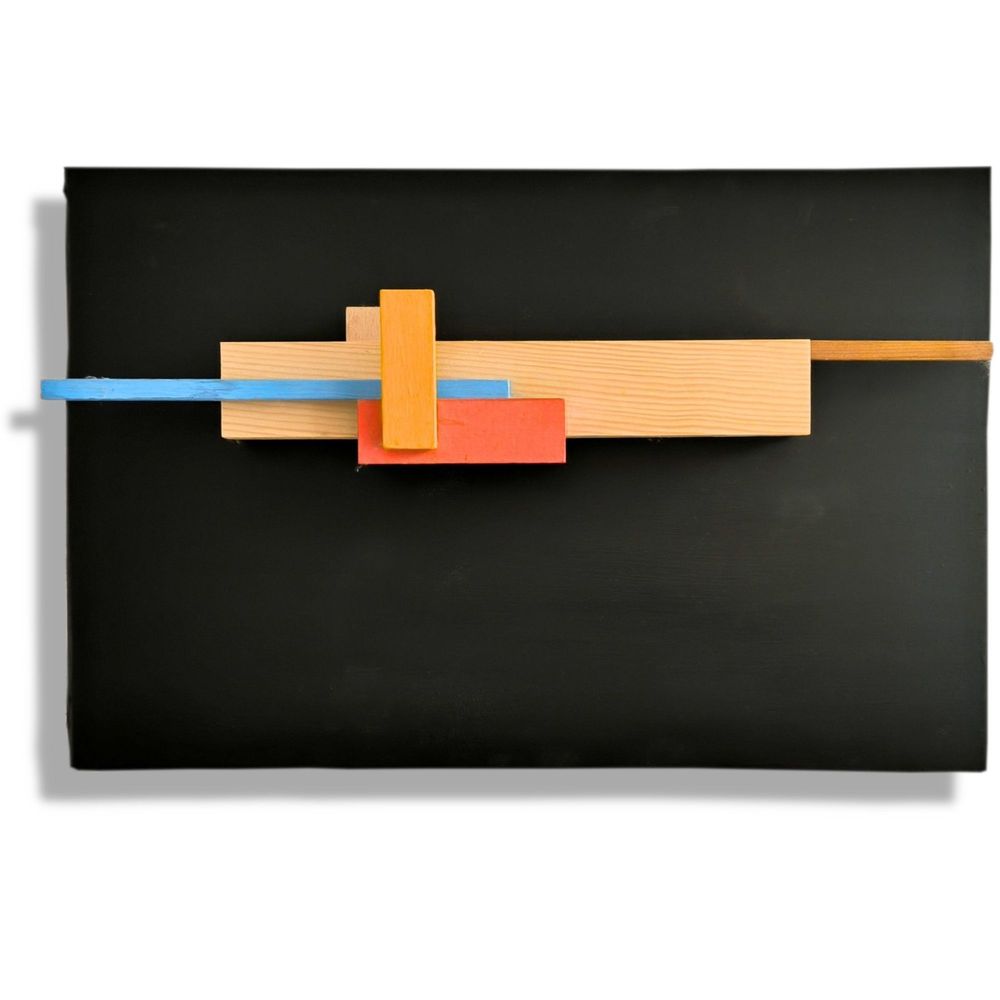
Levente Bálványos – Corrections | Guided Tour
Everything You Always Wanted to Know About Contemporary Constructive and Concrete Art but Were Afraid to Ask.
Levente Bálványos shares his thoughts and answers many questions.
Structured architecture, relaxed atmosphere.
Participation is free, the experience is guaranteed.

Schedule
LEVENTE BÁLVÁNYOS: CORRECTIONS
The artist, who graduated as a sculptor and works in the field of constructive–concrete art, very early stepped beyond the realm of round sculpture (that is, classical sculpture) to explore the possibilities of a new formal order: the plane relief. His work engages with geometric elements and the relationships between shifting, overlapping spatial planes and spatial cross-sections.
Bálványos operates along boundaries. His exhibitions and works combine sculptural, architectural, and installation-based approaches with textural and painterly effects, often enriched by unexpected, unorthodox solutions — in the best sense of the word. As he writes, “I am interested in order, in constructing a minimal system, and in a subtle departure from that given system.”
The current exhibition focuses on plane reliefs created both in the early stages of his career and in recent years, tracing an arc from his initial explorations — which examined the strict yet spontaneous relationships of vertical and horizontal elements — to smaller “wall paintings” composed of four or five curved and amorphous, almost organic parts in varying but internally homogeneous colors.
Bálványos practices reuse: his works are composed of skirting boards, small pieces of furniture (such as a curved quarter of a Thonet chair armrest), found materials, planks, fragments of picture frames, and tinted surfaces.
These abstract spatial constructions — at once anthropomorphic and highly abstract, seemingly precarious yet stable, with their floating planar blocks and spatial images — are closely linked to the fundamental question of what an image is and where the fine boundary between plane and space lies.
The framed (or enclosed within small “box-spaces”), simultaneously symmetrical and asymmetrical relief compositions, as well as the playful structures “placed” against a black background, appear in situations that “imitate” painting. The “picture within a picture” concept surfaces in one piece that expands inward from the plane of the image (made with beeswax – a contour imprint). Another example of this delicate balancing act is a makeshift “building/sculpture model,” which returns the viewer to the realm of space — “the classical framework of artistic self-interpretation.”
Dékei Kriszta
